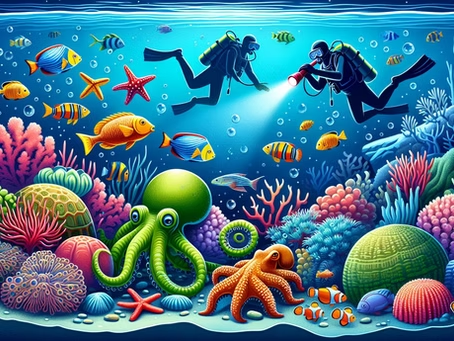Exploring the Wonders of Deep-Sea Ecosystems
The deep sea remains one of Earth’s last great frontiers, a mysterious world hidden beneath waves and darkness. It harbors life forms adapted to extreme conditions, offers scientific breakthroughs with global implications, and faces growing threats from human activity. Understanding these ecosystems is key to preserving biodiversity, advancing science, and protecting the health of our planet.
The Allure of the Abyss
Humans have always been fascinated by the unknown, and the deep sea is the ultimate mystery. It is an environment of crushing pressure, total darkness, and alien-like creatures. Each expedition uncovers life forms never before seen, proving that our planet still holds countless secrets.
Technological Breakthroughs
- Submersibles and remotely operated vehicles (ROVs) provide access to depths beyond human limits.
- Enhanced imaging systems capture life in detail previously unimaginable.
- Autonomous underwater vehicles (AUVs) allow long-term monitoring with minimal disturbance.
These technologies have transformed exploration, allowing scientists to map seafloors, study habitats, and collect delicate samples while minimizing ecological disruption.
Remarkable Life in Extreme Conditions
Deep-sea creatures showcase nature’s ingenuity. Bioluminescence, antifreeze proteins, and slow metabolic rates are just a few of the adaptations that make survival possible in such hostile environments.
Bizarre Discoveries
- Anglerfish use glowing lures to attract prey in the pitch dark.
- Zombie worms feed on whale bones resting on the seabed.
- Barreleye fish have transparent heads with tubular eyes.
These adaptations demonstrate resilience, while deep-sea gigantism, seen in colossal squid and oversized isopods, raises fascinating questions about survival strategies in scarcity-driven ecosystems.
Human Impacts on the Deep
Despite its remoteness, the deep sea is under increasing pressure from human activities.
- Mining: Sediment plumes and noise pollution disrupt delicate ecosystems.
- Pollution: Plastics, chemicals, and heavy metals sink to the ocean floor, threatening marine life.
- Overfishing: Slow-reproducing species struggle to recover, weakening biodiversity and resilience.
These actions jeopardize not only marine habitats but also the global climate functions tied to deep-sea processes.
Conservation and Global Importance
Protecting the deep sea is a complex challenge, especially in international waters. Marine Protected Areas (MPAs) are vital, but only a fraction of the deep ocean is currently safeguarded. International treaties and collaborative efforts are slowly expanding coverage, though enforcement remains difficult.
The stakes are high. Deep-sea ecosystems regulate carbon cycles, support biodiversity, and influence global climate stability. Their protection is essential for planetary health.
Scientific Treasure Troves
Deep-sea research continues to reshape science. Hydrothermal vents revealed chemosynthetic life, changing our understanding of energy sources for ecosystems. Extremophiles have inspired new technologies, while unique chemical compounds from sponges and bacteria hold promise for medical breakthroughs.
Genetic research reveals evolutionary insights, linking deep-sea organisms to ancient lineages and providing valuable information for biotechnology and medicine.
The Climate Connection
The deep ocean plays a central role in mitigating climate change through carbon sequestration in sediments. Yet, warming temperatures, acidification, and shifting pH levels threaten species and habitats, undermining this natural carbon sink. Protecting the deep sea is thus integral to climate resilience.
A Sustainable Path Forward
Exploration must balance discovery with stewardship. Innovations in non-invasive sampling, biodegradable equipment, and eco-friendly vehicles reduce human impact. Public education is equally important in building awareness and advocacy for ocean protection.
Conclusion
The deep sea is more than a hidden world; it is a vital component of Earth’s health and future. Every discovery brings wonder, but also a reminder of responsibility. Protecting these mysterious depths ensures not only the survival of extraordinary creatures but also the well-being of generations to come.

